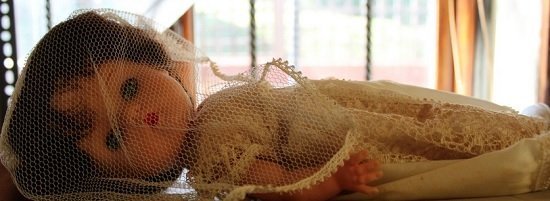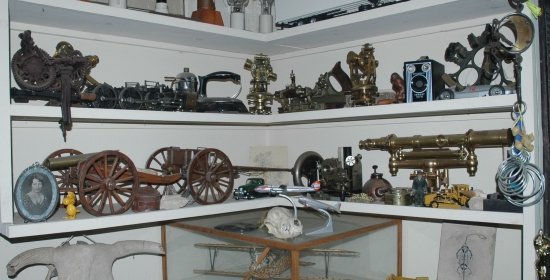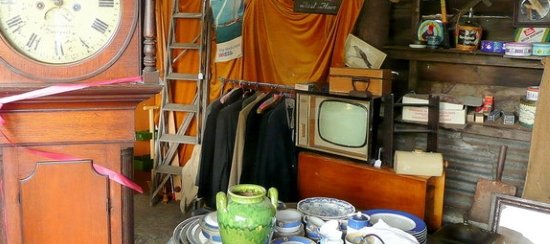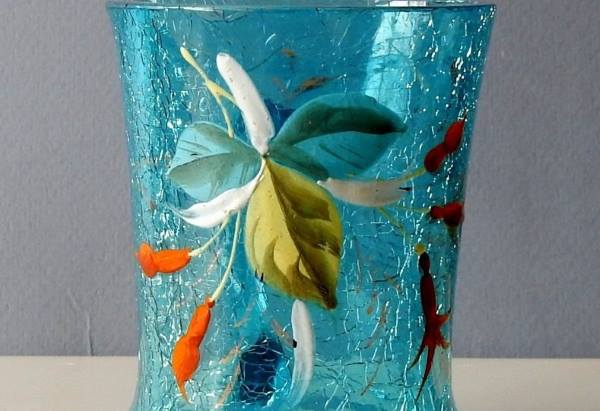Dolls have always mirrored the mores and fashions of our times, and the “bathing beauties” and “naughty novelty dolls” are no exception. Despite the seeming prudery of the Victorian era, pornography reared its ugly head in the 19th century with the advent of the candid camera and the subsequent risque “French” services. (They were also made in Germany, Sweden, Spain, Mexico, America, etc.)
Every Victorian home, likewise, had its share of nude statues, busts, and bare-bottomed cupid’s. In fact, there are times when I believe that the Victorians were more broad-minded than we are today, as we moderns seem to be horrified by everything. Perhaps there was less hypocrisy in those days. A spade was a spade, and a person without clothing was au naturel, as God made them.
Bisque manufacture was cheaper in Germany than it was in France. Thus the Germans, with their large kilns, could produce doll parts alongside their figurines. When a particular item became popular with the mass market, that item was conceived in every size and variation possible. Old catalogs and advertisements of the 1890s and the 20th century tell us that every top German firm manufactured novelty dolls and bathing beauties, but rarely marked them. (Japan carried on the tradition until the 1950s.)
Gustav Shafer and Gunther Vater, (Shafer & Vater, 1890), became very well-known for their risque and comical pitchers, “nippers,” naughty figurines, and lovely porcelain ladies who wore black stockings. (“Nippers” were used for a nip of whiskey.)
All of the leading doll-making companies, including Kestner, advertised the “naughty” dolls that I call “wetters.”Wetters were sold in novelty shops and appealed to roguish gentlemen and boys. Wetters depicted white or black babies sitting on pots (also older people), busty women, little boys answering nature’s call, etc. These cheap bisque figurines had unglazed interiors, an attached rubber bulb, and pierced holes in obvious areas for squirting. These “wetters” were actually more “silly” than “naughty” and varied in size from 2 1/2” to 4 1/2”. Today, being very scarce and collectable, they cost hundreds of dollars.
Other amusing risque figures include the lovely, demure, well-dressed damsel reclining or seated, with her long skirts carefully concealing her knees or ankles. But, oops!–Turn her over and her open drawers reveal a bare bottom! Again, there were all sorts of variations on this theme, some too lurid to describe here. They ranged in size from 2 1/2” to 5 1/2” or slightly larger.
The more popular and expensive “bathing beauties” or “bathers” were likewise made by all the German companies and were usually of a very high quality. They came in bisque, pre-colored bisque, china, and, later, a porous bisque and poorly-painted china. They were sold standing, in diving positions, seated, reclining, primping and posturing. They were nude, dressed in net bathing suits/caps, or sported molded-on swim suits. The bald types wore mohair wigs, others had painted/molded hair. Some were sold attached to pin cushions, jewelry boxes, or reclining on tiny fur rugs. Others came as mermaids or were attached to seashells or found hiding inside. Sizes were generally as follows: 5 1/4” standing; 6 1/4”- 8 1/2” standing; 3 1/2”- 6”+ reclining; 4 1/2”+ seated, etc. Today’s prices vary, depending on size, quality, special marks, etc. A bathing beauty on her original cushion could cost well-over $1,000.
The “bather” dolls are more artistic than naughty, and were inspired by such early bathing beauties as swimming champ, Annette Keilerman, who made her first flicker in 1909. In this short reel she exhibited her swimming and diving talents, as well as her skills at diabolo playing, and physical culture exercises. Her outfit consisted of tights that covered her figure from neck to toenail. Five years later she starred in Neptune’s Daughter, appearing nude in some scenes.
The Mack Sennett bathing beauties actually set the trends for swim wear during the First World War. These silent beauty queens were “Pin-up” girls for servicemen, as was Betty Grable and Dorothy Lamour during the Second World War. To this group came Gloria Swanson, Marie Prevost, Mary Thurman, and blonde Phyllis Haver. Bathing beauties in the Sennett comedies popularized the full-length black tights, baggy shorts with a loose top, and the more daring one-piece bathing suit with a matching cap and heelless slippers with long ankle ties.
Dressel, Kister & Co., 1837-1949, signed some of their exquisite figurine-dolls ca. 1900-1930s. William Goebel, 1876+; dolls’ heads 1887+; bathing beauties, 1908+, also signed some of their bathers. Galluba & Hoffmann, 1891-1930s, made bathers, half-dolls, pin-cushion dolls, etc. Some of their elegant standing figures are dressed and attached to a signed base. They made bathers throughout the 1920s.
Alfred Pensky, 1919+, located in Coburg, Thuringia, Germany, made miniature dolls in both china and bisque. He specialized in flappers, candy-box dolls, babies, and all-bisques.
Signed or unsigned, bathers are ranked among the elite of the doll world. Though pricey, they are worth collecting.






